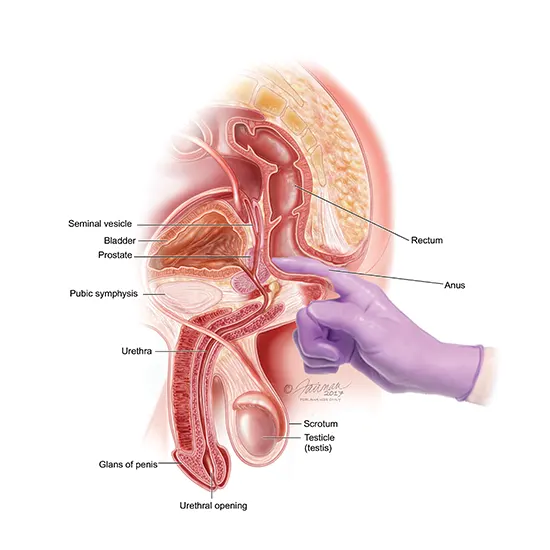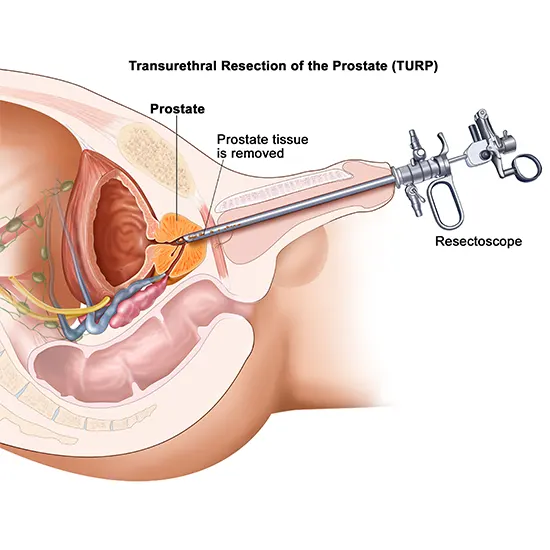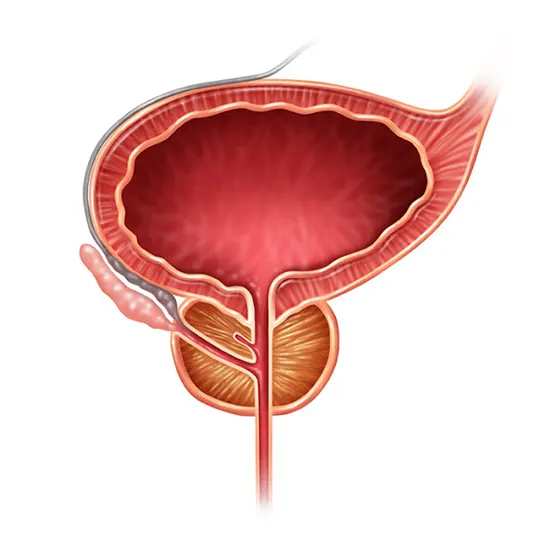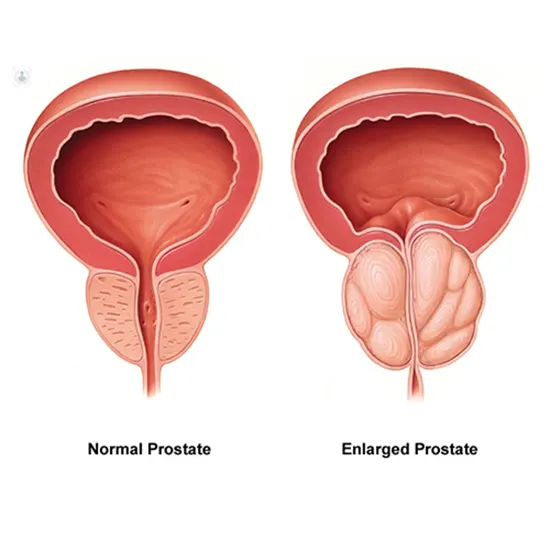
Prostate cancer is a type of cancer that develops in the prostate gland, which is a small walnut-shaped gland located just below the bladder in men. The prostate gland produces fluid that helps to nourish and protect sperm,...
Prostate cancer is a type of cancer that develops in the prostate gland, which is a small walnut-shaped gland located just below the bladder in men. The prostate gland produces fluid that helps to nourish and protect sperm, and it is part of the male reproductive system.
About Prostate Cancer
Prostate cancer is a cancer type that develops in the prostate gland, which is a small gland located in the male reproductive system. It typically grows slowly and may not cause any symptoms for many years. In some cases, however, it can be aggressive and spread quickly to other parts of the body. Prostate cancer develops when prostate gland cells begin to grow and divide destructively. The tumor may grow slowly and remain confined to the prostate gland for many years, or it may grow more quickly and spread to other parts of the body.

Types of Prostate Cancer
The types of prostate cancer are classified based on the cancer cells' appearance under a microscope. The two most common types of prostate cancer are:
- Adenocarcinoma
- Small cell carcinoma
Adenocarcinoma : This is the most common type of prostate cancer, accounting for more than 90% of cases. It develops in the glandular cells that produce the prostate fluid that is part of semen. Adenocarcinoma typically grows slowly and may not cause any symptoms.
Small cell carcinoma : This is a rare and aggressive type of prostate cancer that develops in the neuroendocrine cells of the prostate. Small cell carcinoma tends to grow and spread quickly and may require more aggressive treatment than adenocarcinoma.
Some other types of prostate cancer are mentioned below
Sarcomas : These are cancers that develop in the connective tissues of the prostate, such as the muscle or blood vessels.
Transitional cell carcinoma : This type of prostate cancer develops in the cells that line the urethra, which is the tube that carries urine out of the body. Transitional cell carcinoma is rare and tends to be more aggressive than adenocarcinoma.
Ductal adenocarcinoma : This is a rare type of prostate cancer that develops in the ducts of the prostate gland. Ductal adenocarcinoma tends to grow and spread more quickly than typical adenocarcinoma.
The treatment and management of prostate cancer may vary depending on the type and stage of cancer, as well as other factors such as the patient's age and overall health.
Stages of Prostate Cancer
Prostate Cancer is typically classified into four stages based on the size and extent of the tumor, as well as whether it has spread to nearby lymph nodes or other parts of the body.
The prostate cancer stages are mentioned below:
- Stage I
- Stage II
- Stage III
- Stage IV

Stage I : This is the earliest stage of prostate cancer, in which the tumor is small and confined to the prostate gland. It is usually not detected by a digital rectal exam (DRE) or imaging tests, and it may not cause any symptoms. The cancer is considered low-risk and may not require immediate treatment, but regular monitoring may be recommended to watch for any changes.
Stage II : In stage II, the tumor is still confined to the prostate gland but may be larger than in stage I. It may be detected by a DRE or imaging tests such as an MRI or ultrasound. The cancer is still considered low-risk, but treatment may be recommended depending on factors such as the patient's age, overall health, and life expectancy.
Stage III : In stage III, the tumor has spread outside of the prostate gland and may have invaded nearby tissues or organs, such as the seminal vesicles or bladder. Prostate cancer may also spread to lymph nodes around the prostate gland. The cancer is considered intermediate-risk and may require more aggressive treatment, such as surgery, radiation therapy, or hormone therapy.
Stage IV : In stage IV, cancer has spread to distant parts of the body, such as the bones, liver, or lungs. This is known as metastatic prostate cancer, and it is considered high-risk. Treatment may involve systemic therapies such as chemotherapy, immunotherapy, or targeted therapy, as well as treatments to manage symptoms and improve quality of life.
Overall, the stage of prostate cancer is an important factor in determining the appropriate treatment approach and predicting the prognosis. Early detection and treatment can improve the chances of successful outcomes, so regular screening is recommended for men at higher risk of developing prostate cancer.
Symptoms of Prostate Cancer
The symptoms of prostate cancer can vary depending on the stage of the disease. At the initial stages, prostate cancer usually does not cause symptoms. It may cause the following symptoms:
- Frequent urination, especially at night
- Difficulty starting or stopping urination
- Weak or interrupted urine flow
- Pain or burning sensation during urination
- Blood in the urine or semen
- Pain or discomfort in the pelvic area
- Painful Ejaculation
- Bone pain, especially in the spine, hips, or ribs.
These symptoms can also be caused by conditions other than prostate cancer, so if you experience any of these symptoms, it’s important to consult a healthcare professional for a proper diagnosis.
Risk Factors of prostate cancer
Some of these risk factors include:
Age : Prostate cancer is more common in male of age group of 50 and more.
Family history : Men who have a father or brother with prostate cancer are at higher risk of developing the disease themselves.
Diet : A diet high in red meat, dairy products, and fat may increase the risk of developing prostate cancer.
Obesity : Male with excessive weight may be at higher risk of developing aggressive forms of prostate cancer.
Smoking : Smoking is also one of the factor to an increased risk of prostate cancer development.
Exposure to certain chemicals : Exposure to certain chemicals, such as pesticides, may increase the risk of developing prostate cancer.
Having one or more of these risk factors does not necessarily mean that a man will develop prostate cancer, and some men without any risk factors may still develop the disease. Regular prostate cancer screenings are recommended for all men over the age of 50, or for men who have a higher risk due to family history or other factors.
Complications of Prostate Cancer
Prostate cancer can lead to several complications, depending on the stage of the disease, the location of the tumor, and the patient's overall health. Some of the possible complications of prostate cancer include:

Spread of cancer : Prostate cancer can spread (metastasize) to other parts of the body, including nearby tissues and organs, such as the bladder and rectum, as well as to distant organs.
Urinary problems : Prostate cancer can cause urinary problems, such as difficulty urinating, weak urine flow, frequent urination, and the need to urinate at night. In advanced cases, urinary incontinence (inability to control urination) may also occur.
Sexual dysfunction : Prostate cancer and its treatments can affect a man's sexual function, including erectile dysfunction (difficulty getting or maintaining an erection), decreased sex drive, and problems with ejaculation.
Bowel problems : If cancer spreads to the rectum, it can cause bowel problems, such as diarrhea, constipation, and rectal bleeding.
Bone pain : If cancer spreads to the bones, it can cause bone pain, particularly in the back, hips, and thighs.
Depression and anxiety : Prostate cancer and its treatments can cause emotional distress, including depression and anxiety.
Side effects of treatment : Depending on the type of treatment used, prostate cancer treatment can lead to several side effects, such as fatigue, nausea, vomiting, hair loss, and decreased blood cell counts.
Men with prostate cancer to discuss the potential complications with their doctor and work together to manage any symptoms that may arise.
Benefits of early detection of prostate cancer
The benefits of early detection and treatment of prostate cancer must be balanced against the potential risks of screening, such as false-positive results, unnecessary biopsies, and overdiagnosis. Screening should be discussed with a healthcare provider and individualized based on the patient's age, risk factors, and other -factors.

The benefits of early detection of prostate cancer include:
Increased chances of successful treatment : When prostate cancer is detected early before it has spread beyond the prostate gland, there is a higher chance of successful treatment and cure. This is because early-stage prostate cancer is typically more responsive to treatment, and may not have had the opportunity to spread to other parts of the body.
Improved quality of life : Early detection and treatment of prostate cancer can help prevent or minimize symptoms such as urinary problems, pain, and sexual dysfunction. This can improve the patient's quality of life and reduce the impact of the disease on their daily activities.
Reduced risk of complications : Advanced prostate cancer can lead to complications such as bone pain, fractures, and other serious health problems. Early detection and treatment can help reduce the risk of these complications and improve overall health outcomes.
More treatment options : Early-stage prostate cancer may be treated with a range of options, including surgery, radiation therapy, and active surveillance (monitoring cancer without immediate treatment). When cancer has spread beyond the prostate gland, treatment options may be more limited and may be focused on managing symptoms and prolonging life rather than curing the disease.
Peace of mind : Regular screening for prostate cancer can help men take control of their health and reduce anxiety about the possibility of developing the disease. Even if prostate cancer is detected, early detection can provide a sense of relief and enable patients to take action to manage their health.
Diagnosis of Prostate Cancer
Prostate cancer is typically diagnosed through a combination of medical history, physical examination, and testing.

Medical History : Your doctor will ask several questions about your medical history, including symptoms you are experiencing, your family history of prostate cancer, and other relevant medical conditions.
Physical examination : A doctor may perform a digital rectal exam (DRE) to feel for any abnormalities in your prostate gland, such as lumps or hard spots.
Testing : Several tests may be used to help diagnose prostate cancer. The specific diagnostic procedures used may vary depending on the individual patient's symptoms, risk factors, and other factors. Regular screening and early detection are important for improving the chances of successful treatment and survival. The commonly used diagnostic procedure for prostate cancer is such as:
Prostate-Specific Antigen (PSA) Test : The PSA test measures the level of PSA protein that is prostate gland produces. Elevated PSA levels may indicate the presence of prostate cancer, but other conditions such as an enlarged prostate or infection can also cause elevated PSA levels.
Transrectal Ultrasound (TRUS) : In this ultrasound procedure, a probe is inserted into the rectum, and high-frequency sound waves are used to create images of the prostate gland. This can help detect any abnormalities or tumors.
Prostate Biopsy : If prostate cancer is suspected, a prostate biopsy may be performed to confirm the diagnosis. During a biopsy, a small sample of prostate tissue is removed and examined under a microscope to look for cancer cells.
MRI or CT scan : These imaging tests can be used to look for any signs of prostate cancer and determine the stage and extent of cancer.
Bone Scan : A bone scan can help determine if cancer has spread to the bones, which is a common site for prostate cancer metastasis.
Genetic Testing : Certain genetic changes may increase the risk of developing prostate cancer, so genetic testing may be prescribed for a male with a family history of the disease or other risk factors.
PSMA PET Scan : PSMA PET (Prostate-specific membrane antigen positron emission tomography) scan is an imaging test that uses a radiotracer to detect prostate cancer cells in the body. PSMA is a protein that is overexpressed on the surface of prostate cancer cells, making it a useful target for imaging. During the scan, a very small amount of a radioactive substance called a radiotracer is injected into the patient's bloodstream. The radiotracer binds to PSMA on the surface of prostate cancer cells, which can then be detected by a special camera that produces detailed images of the body. This allows doctors to locate the cancer cells and determine the extent of the disease.

The PSMA PET scan is particularly useful for detecting prostate cancer that has spread to other parts of the body (metastatic prostate cancer), which can be difficult to detect using other imaging tests. PSMA PET Scans can also be used to guide treatment decisions and monitor the effectiveness of treatment.
Conclusion
Prostate Cancer develops in the prostate gland (part of the male reproductive system). It usually grows slowly and may not cause any symptoms at first, but as it progresses, it can lead to problems with urination, sexual function, and overall health. Prostate cancer is usually detected through a combination of physical exams, blood tests, and imaging studies, and the treatment options depend on the stage of cancer and other factors. Treatment may include surgery, radiation therapy, hormone therapy, or a combination of these approaches. Early detection and prompt treatment can help improve outcomes and quality of life for those affected by prostate cancer.
Ganesh Diagnostic offers an ideal preventive health package for prostate health. For more information about the package, feel free to talk to our health counsellors.









